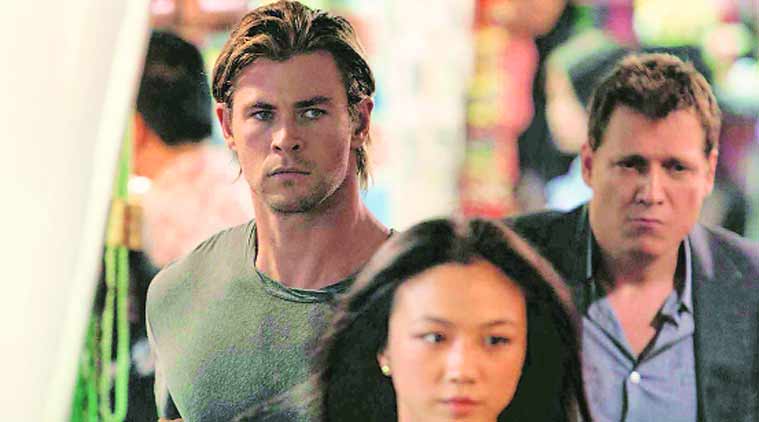Click for more updates and latest Hollywood News along with Bollywood and Entertainment updates. Also get latest news and top headlines from India and around the World at The Indian Express.
Fighting hackers with hackers
Set within world of global cybercrime, Michael Mann’s first film in six years follows a furloughed convict.
 Tang Wei and Chris Hemsworth in a scene from the film.
Tang Wei and Chris Hemsworth in a scene from the film.By: Melena Ryzik
When director Michael Mann began work on his new film Blackhat, an international thriller about good and wicked hackers, he wanted to start by researching some technological basics. Like: “What’s electricity?”
“How does it flow?” he wondered. “It’s not linear.” Also, “How does a single transistor work?” he asked. “How do these chips work?”
Investigating these and other “dopey fundamentals”, as he put it, was his way into a turbo-charged story that stars Chris Hemsworth, Viola Davis and Wang Leehom and aims to bring authentic depictions of cyberterrorism to the theatres.
“The way my mind works, I have to understand the basic building blocks, then I can generate up,” Mann said in an interview in his quiet production office in Los Angeles.
For Mann, the writer, director and producer best known for films like Heat, The Insider, Ali and The Last of the Mohicans, Blackhat posed challenges unlike anything he’d ever tackled, including how to depict the tedium of coding in dramatic fashion. But at 71, with four Oscar nominations and much critical adulation to his credit, Mann remains undimmed.
With Blackhat, he even attended Comic Con for the first time. The idea for the film was inspired by Stuxnet, the computer worm that was identified in 2010 after it had struck an Iranian nuclear facility. Blackhat, the term for a vicious hacker (“white hat” is a good guy), starts with a malware attack on a Chinese nuclear reactor.
Wang plays the MIT-trained Chinese military official tasked with finding the culprit; Hemsworth plays his old programming-whiz college roommate, now incarcerated, whose prison sentence is commuted in exchange for helping solve the puzzle. This being a Michael Mann movie, that means using fists as well as keyboards. Car chases, too.
The movie starts with a nearly five-minute dramatisation of code speeding through a network, shooting lights and grids, and a reverse internal shot of a keystroke. Mann wanted to make it as true as possible; he got a 3D computer model from Qualcomm, the semiconductor maker, to help visualise it. “So the geography is real,” he said. “I didn’t want to do motorcycles on a 3D grid like Tron.”
Capturing the flow of data has bedeviled every filmmaker who’s ever made a movie about programming, said Steve F Anderson, a film professor at the University of Southern California who studies depictions of technology on screen. “3D fly-throughs, psychedelic explosions of 1’s and 0’s, an array of monitors and techno music” are all part of what Anderson calls “Hollywood technological-anxiety films”.
Although Mann was eager to make an of-the-moment movie, hacker films typically don’t age well, Anderson said. Asked if he made the film as an entree into the lucrative Asian market, he said no. “I don’t think of the audience; I just think of what’s interesting to me,” he said. His creative blueprint, he added, is “absolutely intuitive and visceral.”
“The way in is usually through the amygdala,” he said, “not the cerebral cortex.”


































